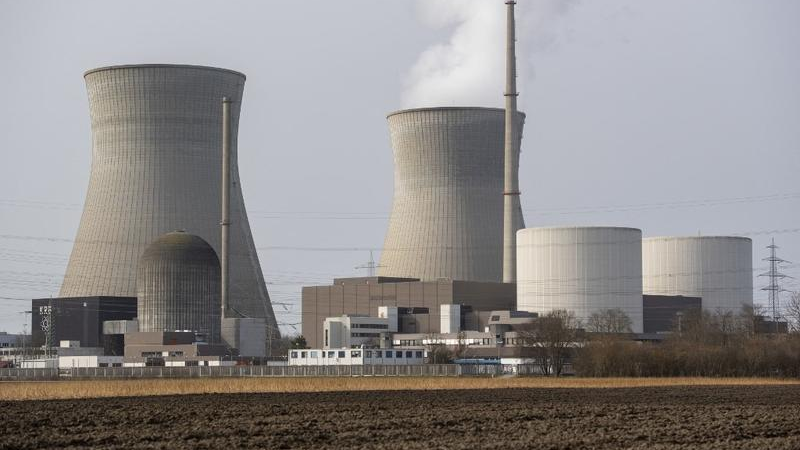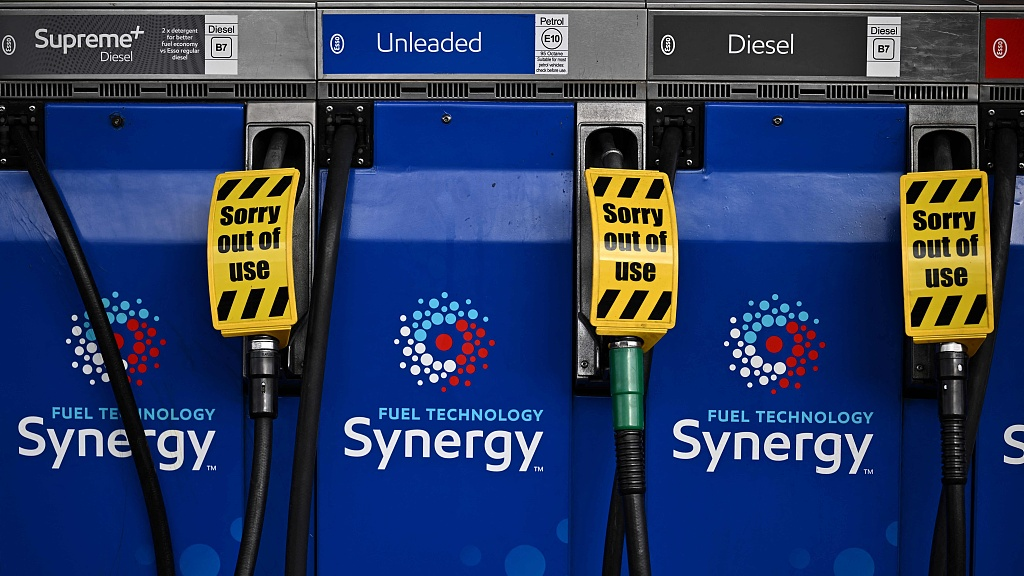
A nuclear power plant is pictured in Gundremmingen, southern Germany, February 26, 2021. /AFP
A nuclear power plant is pictured in Gundremmingen, southern Germany, February 26, 2021. /AFP
Editor's note: Guy Burton is an adjunct professor at the Brussels School of Governance, Belgium. The article reflects the author's opinions and not necessarily those of CGTN.
Could nuclear energy be the best possible alternative to carbon-based forms of energy? That question could be high up on the agenda at the World Utilities Congress, which will be convening in Abu Dhabi from May 9 to 11.
The Congress is expected to provide plenty of thought leadership, direction and strategies that will shape the future of the energy industry, along with nuclear power.
Among the issues that are likely to come up over the nuclear energy question will be how the international community can best encourage investment from the private and public sector, how regulatory frameworks can and should be adapted to accommodate this energy form and what types of innovations and renewable targets can be introduced to support environmental, societal and governance factors in financing frameworks.
Nuclear energy's recent traction among policy makers and business stems from multiple factors. First, while the COVID-19 pandemic may be receding from public view, its repercussions continue to have profound economic and political effects across the world. These effects are now being compounded by the fall-out from seismic geopolitical shifts, such as the Russian conflict with Ukraine, which is dividing the energy industry's leaders at a critical moment.
Despite some decisive action by policy makers, global instability persists, including the threat of rising inflation rates. According to the IMF, inflation is set to rise by 5.7 percent in advanced economies and 8.7 percent in emerging market and developing economies by the end of 2022.
These figures are nearly 2 percent and 3 percent higher than the IMF's last January predictions and, most worryingly for the public, energy and food are among the areas where inflation will be the most noticeable.
In many parts of the world, energy is more expensive than it has ever been, and this rise is not expected to be temporary. It is predicted that prices will remain extortionately high for some time unless we can find new and imaginative ways to respond to the current crisis.
No easy decisions
Second, the Ukraine crisis is putting pressure on policy makers to locate and use alternative sources of energy. The EU, for instance, has recently proposed a sixth package of sanctions against Russia, which could see a full embargo on Russian oil exports, but there remains no unified EU position on the matter.
Making the switch that these sanctions would require won't be easy. In recent years, Europe has grown more dependent on Russian gas. In 2021, Russia's share of the European market was 33 percent, up from 25 percent in 2009. Challenges will also come from finding alternate suppliers, as many non-Russian gas suppliers are locked into contracts with other buyers, especially in Asia, where demand has been growing over the past decade.

Fuel pumps warning customers about a shortage of diesel and fuel at a petrol station in Paddock Wood, Kent, the UK, April 12, 2022. /VCG
Fuel pumps warning customers about a shortage of diesel and fuel at a petrol station in Paddock Wood, Kent, the UK, April 12, 2022. /VCG
Against the backdrop of this uncertainty, coal producers have made an unexpected return to centerstage. Indonesia and Australia, some of the world's top coal exporters, had met their yearly production limits by April.
While there are no easy decisions when it comes to finding alternatives to Russian oil and gas, there are some that will have a more positive impact than others.
Low-carbon alternatives
Third, there is a wider and more long-term shift towards a post-carbon future that is prompting an evaluation of current forms of energy production. Already, efforts are underway to boost renewable energy production and usage, to meet ambitious carbon neutrality goals. According to the International Energy Agency, 90 percent of global electricity must be produced from renewable energy for the world to achieve net zero emissions by 2050; in 2020, renewable energy only made up 29 percent of the world's electricity. Clearly, there is much work to be done.
Alongside solar, wind and water power, another low-carbon alternative that arguably has the best chance of plugging the gap left by the Russian oil and gas suppliers is nuclear power. Once considered a potentially volatile resource, nuclear energy is now being commended for its reliability, particularly when compared to the renewable resources that are only intermittently available, such as wind and solar.
In Germany, discussions are underway to reactivate the three plants switched off at the end of last year (alongside the other three that are still operational) to replace the Russian gas and oil, which respectively make up 55 percent and 34 percent of the country's energy mix. In Belgium in March, the government reversed a decision to phase out nuclear energy by 2025 and extended the life of two reactors for another decade.
From ambition to action
Yet even with these promising pledges, the successful deployment of nuclear energy will not be straightforward. That is why there is likely to be so much attention given to nuclear energy at the Congress, from its current role and its safe and reliable deployment to its cutting edge innovations.
The post-carbon future cannot materialize without forums that enable increased alignment of priorities on efforts to address both short- and longer-term challenges associated with them. Only then will we be able to turn ambition into action.
(If you want to contribute and have specific expertise, please contact us at opinions@cgtn.com. Follow @thouse_opinions on Twitter to discover the latest commentaries in the CGTN Opinion Section.)

